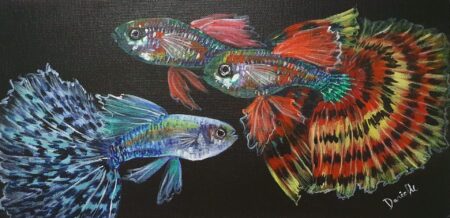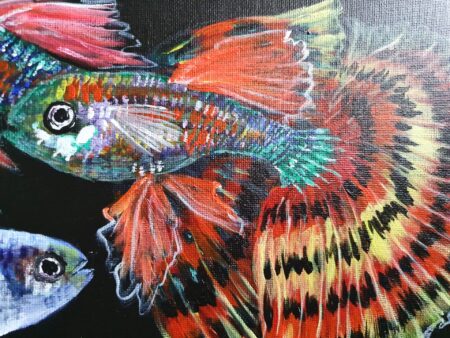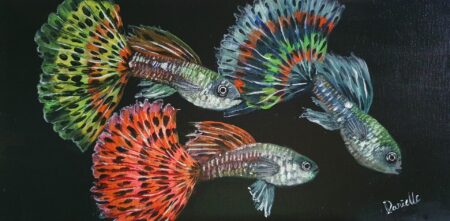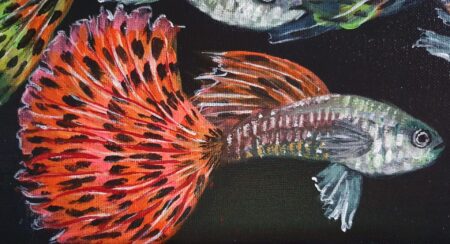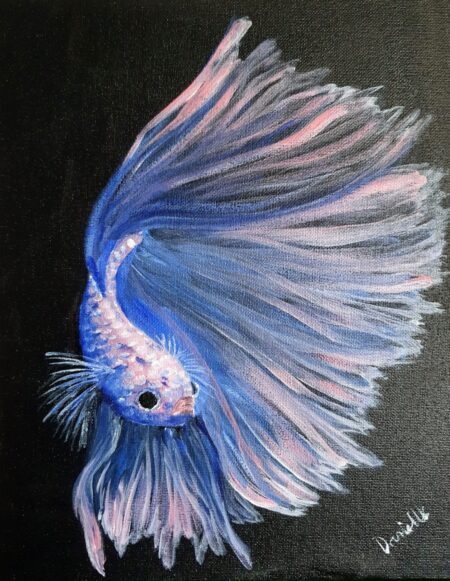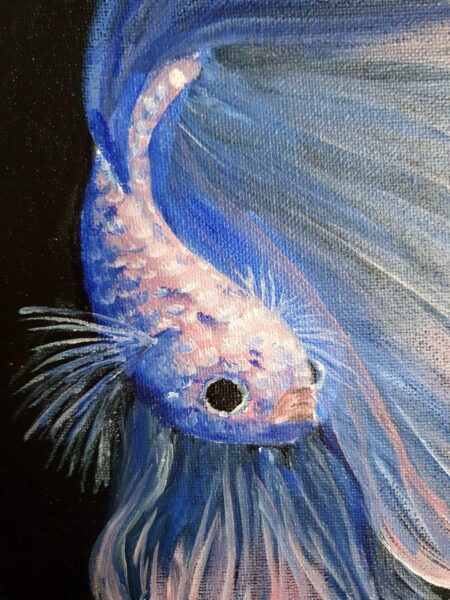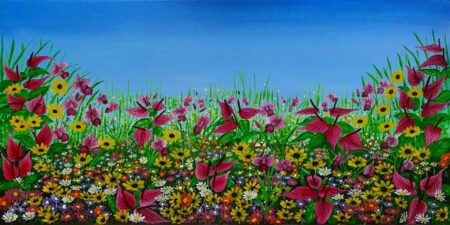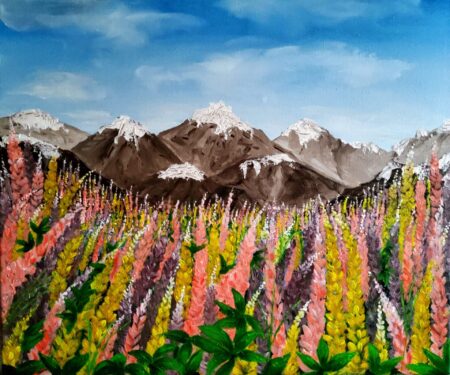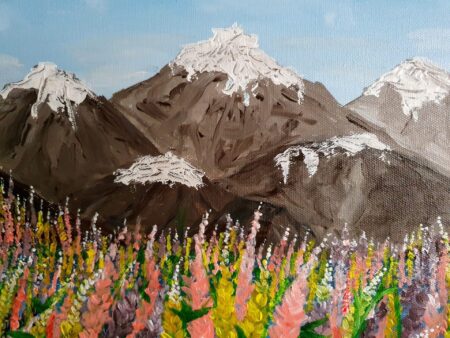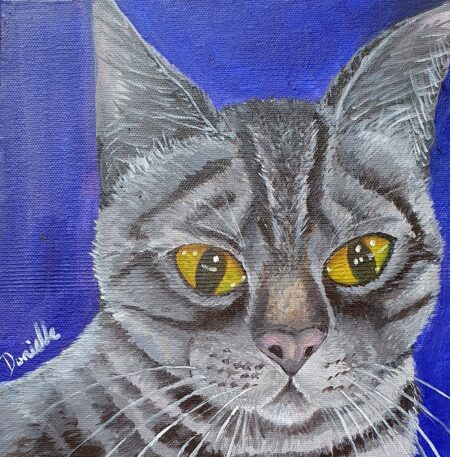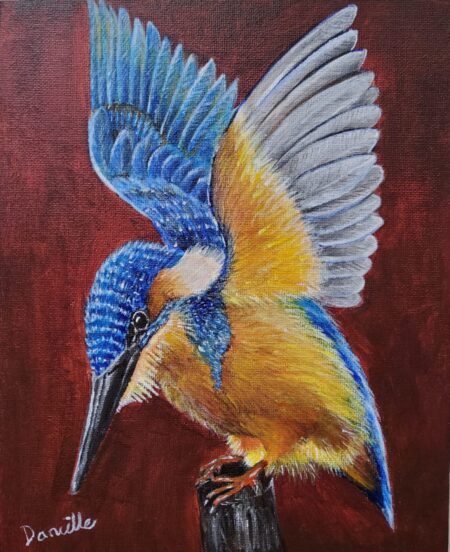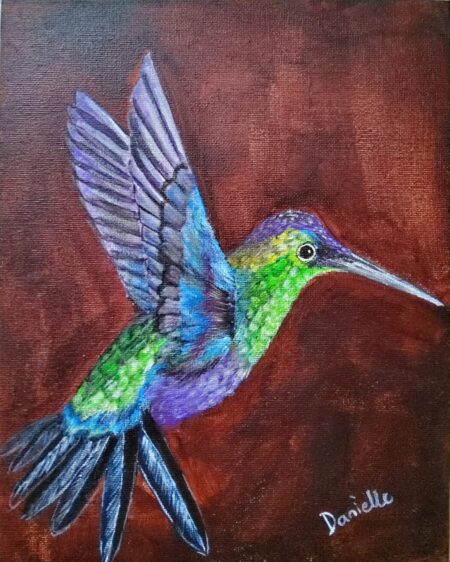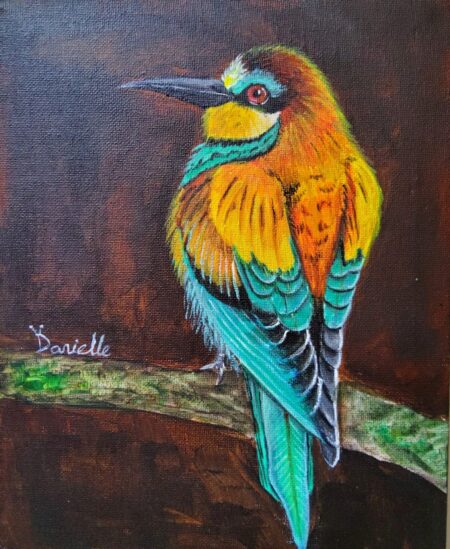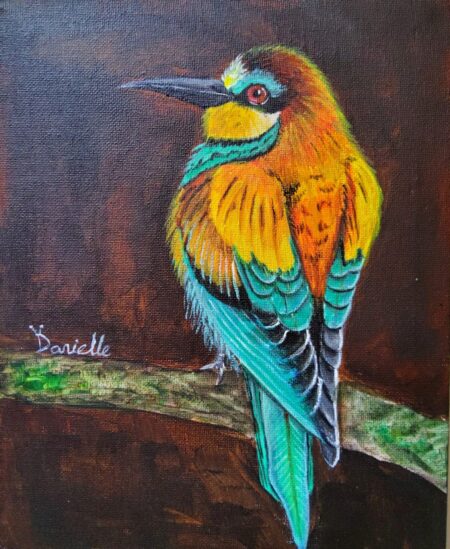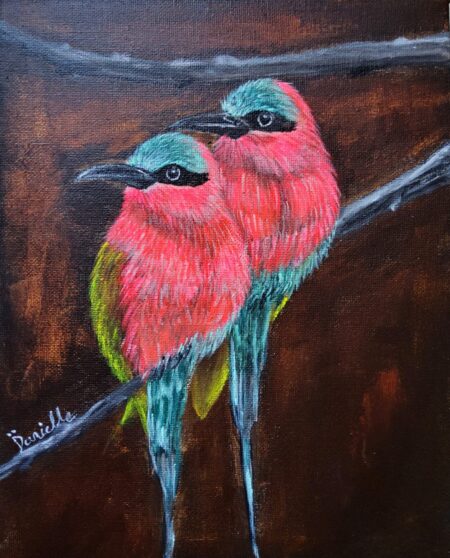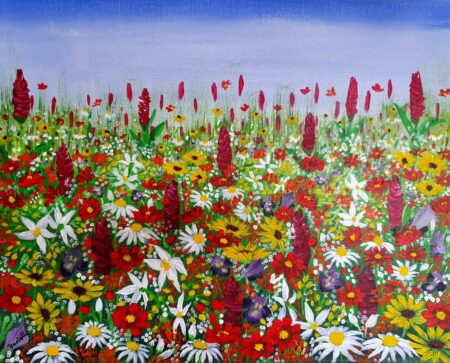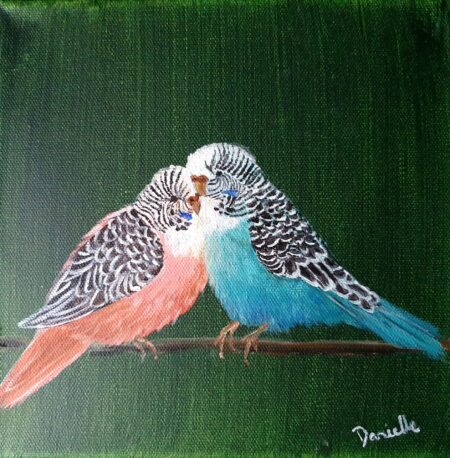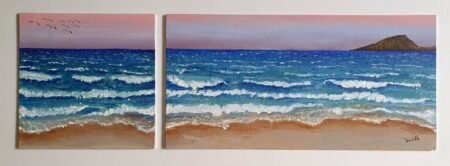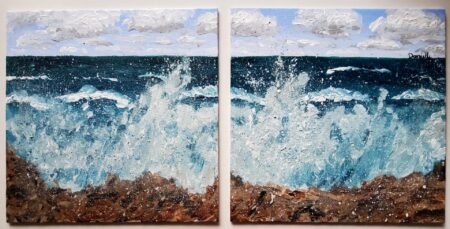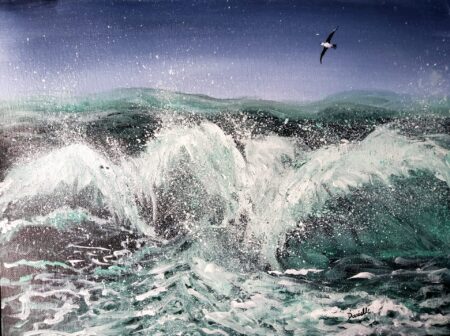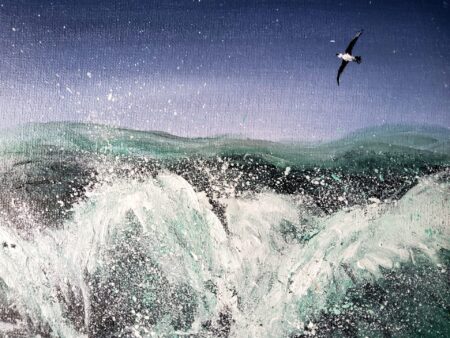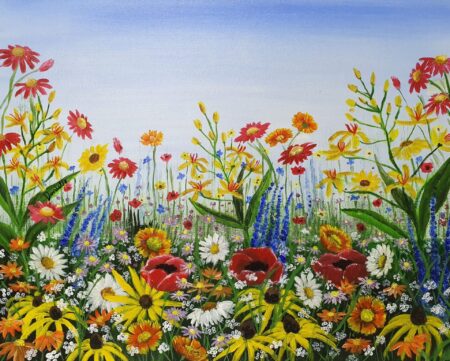Blue
49 Products
Active Filters
Filter by Category
Filter by Size
Filter by Price
Min Price:
Max Price:
-

 SOLDSelect options This product has multiple variants. The options may be chosen on the product page Quick View$600.00
SOLDSelect options This product has multiple variants. The options may be chosen on the product page Quick View$600.00This vibrant guppy painting showcases the beauty of marine life with shimmering colors, intricate patterns, and flowing fins. Set against a dark background, it captures the elegance and movement of these fish, making it perfect for adding energy and tranquility to any space.
Select options This product has multiple variants. The options may be chosen on the product page -

 SOLDSelect options This product has multiple variants. The options may be chosen on the product page Quick View$600.00
SOLDSelect options This product has multiple variants. The options may be chosen on the product page Quick View$600.00This vibrant guppy painting showcases the beauty of marine life with shimmering colors, intricate patterns, and flowing fins. Set against a dark background, it captures the elegance and movement of these fish, making it perfect for adding energy and tranquility to any space.
Select options This product has multiple variants. The options may be chosen on the product page -

 Select options This product has multiple variants. The options may be chosen on the product page Quick View$500.00
Select options This product has multiple variants. The options may be chosen on the product page Quick View$500.00This Betta fish painting captures its elegance and grace with flowing blue and lavender fins against a dark background. Symbolizing resilience and individuality, it’s perfect for adding serenity and beauty to any space while celebrating nature’s artistry.
Select options This product has multiple variants. The options may be chosen on the product page -

 Select options This product has multiple variants. The options may be chosen on the product page Quick View$900.00This vibrant wildflower meadow painting captures the joy and serenity of nature in full bloom. With colorful blossoms, lush greenery, and a crisp blue sky, it symbolizes harmony and peace, making it perfect for bringing warmth and positivity to any space.Select options This product has multiple variants. The options may be chosen on the product page
Select options This product has multiple variants. The options may be chosen on the product page Quick View$900.00This vibrant wildflower meadow painting captures the joy and serenity of nature in full bloom. With colorful blossoms, lush greenery, and a crisp blue sky, it symbolizes harmony and peace, making it perfect for bringing warmth and positivity to any space.Select options This product has multiple variants. The options may be chosen on the product page -

 Select options This product has multiple variants. The options may be chosen on the product page Quick View$750.00
Select options This product has multiple variants. The options may be chosen on the product page Quick View$750.00This stunning landscape painting features vibrant wildflowers in pink, yellow, and lavender set against majestic snow-capped mountains and a clear blue sky. It symbolizes resilience, harmony, and the beauty of nature, making it a perfect addition to any space seeking tranquility and inspiration.
Select options This product has multiple variants. The options may be chosen on the product page -

 $80.00
$80.00Medium: Acrylic on canvas board,
Size: 24cm x 24cmThis is Gandalf, the Grey. He is the new kid on the block. We decided to call him Gandalf, the grey wizard from Lord of the Rings, because of his grey fur. This little boy is only 8 months old when I first saw him. He is a boisterous, naughty and curious little boy. I later found out his name is Meowy and was abandoned in my estate. Good news is that he has recently been adopted and is in good hands. Thank God for that.
-

 $150.00
$150.00Medium: Acrylic paint on canvas
Size: 27cm x 22cmThere is a sudden migration of kingfishers around where I stay. I wonder why they are here as there is no big body of water here. It is indeed a strange sighting around this area. nevertheless it is always nice to see new species around here.
Do you also know that Kingfishers are known to be sacred in Polynesia and Greece. In Polynesia they are known to be the controller of waves and have venerable powers over the sea. In Greece, they are called Halcyons.
The name halcyon itself comes from the Greek goddess, Alcyone who was married to Ceyx. According to legend the couple were happily married but made the mistake of calling each other Zeus and Hera, which angered the real god Zeus who in bad temper killed Ceyx by sinking his ship with a thunderbolt.
On hearing this, Alcyone, wrought with grief, threw herself into the sea and drowned. Out of compassion, however, the gods later changed them both into beautiful flashing blue halcyon birds named after her and recognised in the kingfisher’s scientific name of Alcedo, after Alcyone.
In present day Greece, Halcyon days means having calm and nice weather.
-

 $100.00
$100.00Medium: Acrylic paint on canvas
Size: 27cm x 22cmThe bee-eaters are a group of non-passerine birds in the family Meropidae, containing three genera and twenty-seven species. Most species are found in Africa and Asia, with a few in southern Europe, Australia, and New Guinea. They are characterised by richly coloured plumage, slender bodies, and usually elongated central tail feathers. All have long down-turned bills and medium to long wings, which may be pointed or round. Male and female plumages are usually similar
-

 $100.00
$100.00Medium: Acrylic paint on canvas
Size: 27cm x 22cmThe bee-eaters are a group of non-passerine birds in the family Meropidae, containing three genera and twenty-seven species. Most species are found in Africa and Asia, with a few in southern Europe, Australia, and New Guinea. They are characterised by richly coloured plumage, slender bodies, and usually elongated central tail feathers. All have long down-turned bills and medium to long wings, which may be pointed or round. Male and female plumages are usually similar
-

 Select options This product has multiple variants. The options may be chosen on the product page Quick View$1,300.00
Select options This product has multiple variants. The options may be chosen on the product page Quick View$1,300.00This vibrant wildflower meadow painting captures the beauty and joy of nature with daisies, poppies, and colorful blooms under a serene blue sky. Symbolizing growth, renewal, and harmony, it’s perfect for adding positivity and natural charm to any space.
Select options This product has multiple variants. The options may be chosen on the product page -

 Select options This product has multiple variants. The options may be chosen on the product page Quick View$400.00
Select options This product has multiple variants. The options may be chosen on the product page Quick View$400.00This dramatic seascape painting captures the raw power of crashing waves under a deep blue sky, symbolizing resilience, strength, and serenity. Perfect for bringing inspiration and tranquility to any space, it’s a reminder of nature’s beauty and boundless possibilities.
Select options This product has multiple variants. The options may be chosen on the product page -

 Select options This product has multiple variants. The options may be chosen on the product page Quick View$1,300.00
Select options This product has multiple variants. The options may be chosen on the product page Quick View$1,300.00This vibrant wildflower garden painting showcases colorful daisies, poppies, sunflowers, and delicate blooms under a serene blue sky. Celebrating diversity, growth, and positivity, it’s perfect for adding warmth, cheer, and a touch of nature’s beauty to any space.
Select options This product has multiple variants. The options may be chosen on the product page

